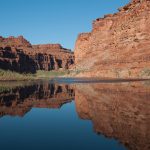- Utah’s soil moisture is in the bottom 10th percentile.
- Statewide reservoirs are 82% full on average.
- The south arm of Great Salt Lake has dropped nearly two feet since its peak in May.
- Utah continues to promote water conservation initiatives.
August 20, 2024 –– According to the Utah Division of Water Resources’ August 2024 water conditions report, summer precipitation in Utah has been disappointing. Most basins are experiencing below-average rainfall, resulting in low soil moisture.
Candice Hasenyager, director of the Utah Division of Water Resources, emphasized the importance of monsoons for saturating the soil and ensuring a good spring runoff next year. “The state has been drying out this summer. Monsoons have been present in some form, but have been few and far between,” she said . “We need more of these monsoons to saturate our soils for an efficient spring runoff next year.”
. “We need more of these monsoons to saturate our soils for an efficient spring runoff next year.”
Reservoirs and the Great Salt Lake.
Despite the dry conditions, Utah’s reservoirs are currently 82% full on average, higher than normal and last year’s levels. However, the south arm of the Great Salt Lake has dropped nearly two feet since its peak in May, primarily due to evaporation and water flowing to the north arm. The state publishes reservoir data on the Utah Division of Water Resources’ website.
on the Utah Division of Water Resources’ website.
Conservation Efforts.
Hasenyager encouraged residents to adjust their irrigation schedules and consider water-wise landscaping. “Keep an eye on the sky and adjust your yard’s irrigation schedule accordingly,” she said. “Also, fall is a great time to convert nonfunctional lawn to water-wise landscaping. This creates a beautiful, low-maintenance area and saves water.”
The Utah Department of Natural Resources promotes water conservation initiatives, such as the Agricultural Optimization Program for farmers and SlowtheFlow.org
for farmers and SlowtheFlow.org for residents. These programs aim to educate and incentivize water-saving practices, helping Utahns become more drought-resilient.
for residents. These programs aim to educate and incentivize water-saving practices, helping Utahns become more drought-resilient.



Leave a Reply